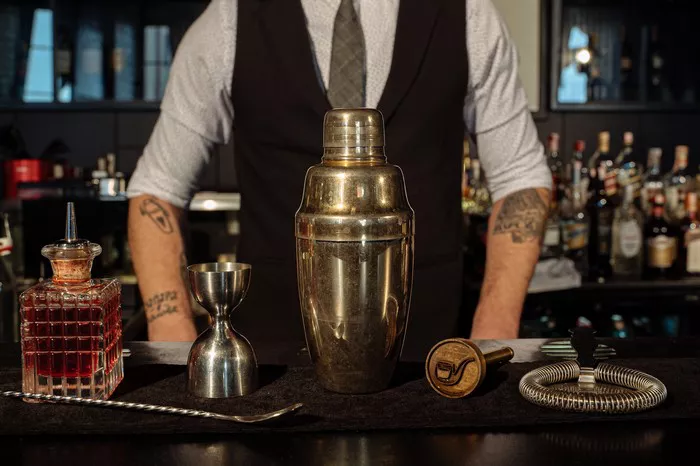Speyside Scotch whisky, a revered and cherished spirit, holds a special place in the world of single malt whisky. Renowned for its distinct character, Speyside whisky is celebrated for its refined and complex flavors. In this professional article, we embark on a journey through the heart of Scotland’s whisky-producing region to explore the world of Speyside Scotch whisky. We will delve into its origins, production methods, flavor profiles, and the captivating history that has made it an icon of the whisky world.
The Speyside Region: Whisky’s Enchanting Heartland
Speyside, a region nestled in the heart of Scotland’s whisky landscape, is often considered the epicenter of single malt production. It is characterized by its lush green landscapes, abundant water sources, and a concentration of distilleries that is unparalleled in Scotland. The region is named after the River Spey, which flows through the area, providing both a rich water source and a scenic backdrop for many distilleries.
The Speyside region is renowned for its picturesque distilleries, each with its own unique charm and character. From the verdant glens to the rolling hills, Speyside is a haven for whisky enthusiasts and a testament to the art of Scotch whisky production. Its distinct geographical features, combined with a rich tradition of whisky-making, contribute to the unique qualities of Speyside Scotch.
Origins of Speyside Scotch Whisky
The history of Speyside Scotch whisky is steeped in tradition, dating back centuries. It is believed that whisky production in the region began in earnest during the 18th century when the art of distillation was honed and refined. Early distillers recognized the potential of the abundant barley and pristine water sources in Speyside, and this led to the establishment of numerous distilleries.
One of the defining moments in Speyside’s whisky history was the passage of the Excise Act of 1823. This legislation, which legalized and regulated whisky production, marked a turning point for the industry. Many illicit distilleries went legitimate, and the region’s reputation for producing high-quality whisky continued to grow. Speyside Scotch became increasingly popular and began to attract attention from both domestic and international markets.
Production Methods: Crafting Speyside Excellence
The production of Speyside Scotch whisky follows a time-honored process that combines tradition and innovation. Here are the key steps involved in crafting this exceptional spirit:
Malting: The process begins with malting barley, where the barley grains are soaked in water, allowed to germinate, and then dried in kilns. This malting process converts starches into fermentable sugars, preparing the barley for mashing.
Mashing: The malted barley is ground into a coarse powder, known as grist, which is mixed with hot water in a mash tun. This creates a sugary liquid known as wort, which serves as the base for fermentation.
Fermentation: The wort is transferred to fermentation vessels, typically made of wood or stainless steel, and yeast is added. Over several days, the yeast converts the sugars in the wort into alcohol, producing a liquid called “wash.”
Distillation: The wash is distilled in copper pot stills or continuous column stills, resulting in a liquid with a higher alcohol content. The distillation process helps concentrate and refine the flavors of the spirit.
Maturation: The distilled spirit, known as “new make spirit” or “white dog,” is placed in oak casks for aging. The aging process allows the whisky to develop complex flavors and mellow over time. Speyside distilleries often use a combination of bourbon and sherry casks, which contribute to the unique character of Speyside Scotch.
Bottling: After maturation, the whisky is carefully monitored by master distillers. When it reaches the desired age and flavor profile, it is filtered, diluted to the desired bottling strength with water, and then bottled.
Flavor Profile of Speyside Scotch
Speyside Scotch whisky is known for its diverse and elegant flavor profile, which distinguishes it from other Scottish whisky regions. The key flavor characteristics of Speyside Scotch include:
Fruity and Floral: Speyside whiskies often exhibit notes of ripe orchard fruits, including apples, pears, and peaches. Floral undertones, reminiscent of heather and honey, contribute to the overall elegance of the spirit.
Maltiness: The malted barley used in Speyside whisky production imparts a malty and cereal-like quality, adding depth and character to the flavor.
Sweetness: Many Speyside whiskies feature a pleasant sweetness, which can range from honey and toffee to vanilla and butterscotch, creating a smooth and approachable profile.
Sherry Influence: The use of sherry casks in maturation adds rich and dried fruit flavors, as well as hints of spice and nuttiness to the whisky.
Notable Speyside Distilleries
Speyside is home to a remarkable number of distilleries, each with its own unique offerings and heritage. Some of the most renowned distilleries in the region include:
Glenfiddich: Established in 1887, Glenfiddich is one of the most iconic Speyside distilleries. It is known for its innovative approach to whisky-making and its wide range of expressions.
The Macallan: The Macallan is famous for its commitment to using high-quality sherry-seasoned oak casks for maturation, resulting in rich and full-bodied Scotch.
Glenlivet: Glenlivet is often referred to as the “single malt that started it all” due to its pioneering role in making single malt Scotch accessible to a wider audience.
Aberlour: Aberlour Distillery is renowned for its rich and full-flavored Speyside whisky, often aged in a combination of sherry and bourbon casks.
Balvenie: Balvenie is celebrated for its dedication to traditional craftsmanship, including on-site malting and cooperage.
Conclusion
Speyside Scotch whisky, with its rich history, elegant flavor profile, and a concentration of world-renowned distilleries, stands as a gem within the world of single malt Scotch. Its captivating combination of fruity and floral notes, maltiness, and sweetness has earned it a special place in the hearts of whisky enthusiasts.


